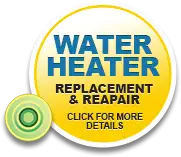How water filters work

Water filters use 2 different processes to remove impurities, physical filtration or chemical filtration. Physical filtration, involves some form of membrane or filter to catch the larger particulates as water passes through. Chemical filtration method requires that water passes through an active material that will chemically remove any impurities.
Four types of water filters
1. Activated carbon
This is the most common household water filter. It uses activated carbon granules, referred to as active carbon or AC or more commonly, charcoal. Charcoal is similar to a sponge, it is filled with nooks and crannies that will attract and trap the impurities through absorption. Charcoal works well in removing chlorine-based chemicals, solvents and some pesticides. It will not help remove microbes, sodium heavy metals, nitrates or fluorine. The other disadvantage to an activated carbon filter is that it will need to be changed quite frequently as it will become clogged with impurities and become less efficient or stop removing impurities altogether. Read More about activated carbon filters.
2. Reverse osmosis
The force contaminated water through a semi-permeable membrane with increased pressure, so only water passes through and contaminants remain behind.
Osmosis is a natural process by which water moves to ensure equal distribution of particles. Reverse osmosis forces water to move against its natural inclination, this requires an energy source. An electrically powered pump is needed to force water through the reverse osmosis filter. This type of filter can be costly to run and similar to a charcoal filter in that it does not remove nitrates, salts some bacteria. Another drawback to a reverse osmosis filter is the amount of wastewater it produces in the process. Read More about reverse osmosis filters.
3. Ion exchange
An Ion-exchange filter also known as a water softener is designed to remove impurities such as Magnesium and Calcium by exchanging bad particles with good particles.
Water passes through a tank containing a resin medium that has a negative ion charge and an ion-positive sodium solution, called brine. The positively charged particles such as Calcium and Magnesium are exchanged for the lesser charged Sodium particles and are washed down the drain. Some disadvantages to using only an ion exchange filter; you now have a higher sodium content in your water, and the filtration system needs to be recharged periodically and cleaned to prevent salt buildup in the brine storage container. Read More about water softeners.
4. Distillation
The oldest and simplest way to purify water is to boil it. Distillation is a process in which water is boiled and the steam is captured and cooled in a separate container. This process will kill many types of bacteria; however it will not remove other contaminants. Some contaminants boil at a lower temperature than water so they will evaporate with the steam and not be removed through this process.
There is no single filtration system that will remove all impurities from water. It is very common for many home filtration systems to use 2 or more processes.
Request a Quick Quote
To provide your free quick quote, we'll need a little information first. Please fill out the form below. We'll follow up with you within 24 hours.
* - required fields.- Amesbury, Salisbury, Seabrook978-462-0553
- Andover, North Andover, Methuen978-475-0746
- Danvers, Middleton978-531-2220
- Dover, Newington603-427-9300
- Epping, Newfields603-964-6206
- Exeter, Brentwood, East Kingston603-964-6206
- Georgetown, Topsfield, Boxford978-352-4937
- Greenland, Newton, Stratham603-964-6206
- Groveland, Merrimac978-478-5505
- Hampton, North Hampton, Kensington603-964-6206
- Haverhill978-372-3641
- Ipswich, Rowley, Byfield978-352-4937
- Newburyport, Newbury, West Newbury978-462-0553
- Plaistow, Kingston, Hampstead603-478-5505
- Portsmouth, Newcastle, Rye603-427-9300








